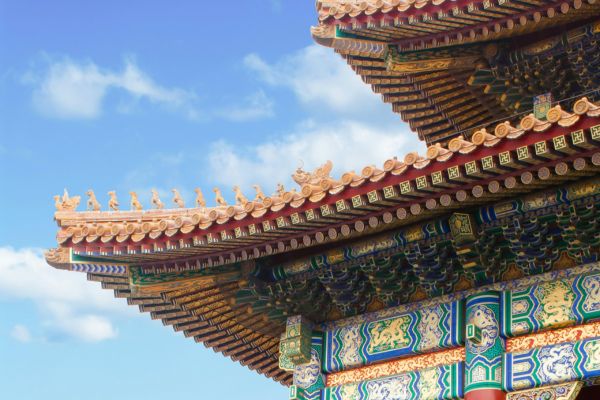
Key takeaways:
- In 2023, China’s recognition of a Japanese bankruptcy decision in the case of In re Shanghai International Corporation (2021) Hu 03 Xie Wai Ren No.1, signifies a potential shift in the historically strained mutual recognition landscape between the two countries, marking a significant turning point.
- The Shanghai Court’s decision emphasizes the substantial similarity between the roles of the Japanese supervisor and the administrator in China’s self-management model, leading to recognition of the Japanese supervisor’s role and assistance in his duties.
- This case showcases a practical application of de jure reciprocity test in cross-border bankruptcy cases, adding to earlier instances where Chinese courts recognized foreign judgments based on the same reciprocity test, indicating a positive signal towards broader recognition of foreign judgments by Chinese courts.
In our previous post “Turning Point: China First Recognizes Japanese Bankruptcy Decision”, we discussed a landmark case, in which a Chinese court recognized a Japanese bankruptcy decision in 2023, signaling a potential shift in the traditionally strained mutual recognition landscape between China and Japan (See In re Shanghai International Corporation (2021) Hu 03 Xie Wai Ren No.1 ( (2021)沪03协外认1)).
As noted in that post, this case marks not only the first time that China has recognized a Japanese court decision in a bankruptcy procedure, but also the first time that China has recognized a Japanese judgment.
In April 2024, we noticed that this Chinese court ruling, although redacted, is now available in “People’s Court Case Database”(人民法院案例库) – China’s recently launched online database of court judgments and rulings. Just one month ago, this case was also publicly released as one of the “2023 Typical Cases” of the Shanghai Bankruptcy Tribunal of the Shanghai Third Intermediate People's Court.
To enrich CJO readers’ understanding of this case, this article will provide additional case facts and judicial reasoning drawn from the publicly available judgment. Additionally, it aims to offer a more precise and detailed case example in the field of Sino-foreign (with a particular focus on Sino-Japan) mutual recognition and enforcement of court judgments.
Related Posts:
- Turning Point: China First Recognizes Japanese Bankruptcy Decision
- How Chinese Judges Recognize Foreign Bankruptcy Judgments
- China Recognizes Another German Bankruptcy Judgment in 2023
- Some Thoughts on the Sino-Japanese Reciprocal Recognition Dilemma in Light of the Recent Developments in the Recognition and Enforcement of Foreign Judgments in China
1. Case background
Shanghai International Corporation (上海国际株式会社) was established in Japan in 1993 and is a comprehensive trading company. Its headquarters is located in the Chuo Ward of Tokyo, Japan. It also has an office in Shanghai and has five Chinese shareholders.
After falling into a debt crisis in July 2019, Shanghai International Corporation applied to the Tokyo District Court in Japan to initiate civil rehabilitation proceedings.
In September 2019, the Tokyo District Court issued a supervisory order decision, numbered 2019 (Re) No. 44, appointing attorney Maruhito Kondo from the Maruhito Kondo Law Office to oversee Shanghai International Corporation. The court also made a decision to commence civil rehabilitation proceedings under 2019 (Re) No. 44, formally starting the civil rehabilitation proceedings.
In September 2021, Shanghai International Corporation filed an application with the Shanghai Third Intermediate People’s Court (hereinafter the “Shanghai Court”). It stated that the civil rehabilitation proceedings in Japan involved seven Chinese creditors. These creditors’ rights were recognized in the Japanese civil rehabilitation proceedings and were settled according to the rehabilitation plan. Given the company’s substantial assets in Shanghai, including real estate, shares in listed companies, and equity in five Chinese subsidiaries, the application was made to facilitate the smooth progress of the Japanese civil rehabilitation proceedings and to protect the interests of both Chinese and international creditors and shareholders to the greatest extent. The application sought recognition of the Tokyo District Court’s decisions regarding Shanghai International Corporation’s civil rehabilitation proceedings, specifically the 2019 (Re) No. 44 supervisory order appointing a supervisor and the decision to commence the civil rehabilitation proceedings.
2. Court views
Pursuant to Article 5 of the PRC Enterprise Bankruptcy Law, in the absence of any pertinent treaty between China and Japan, when a party applies for Chinese courts to recognize and assist Japanese bankruptcy proceedings, the court should review the following aspects:
- Whether the foreign bankruptcy proceeding is a collective proceeding and whether it has been initiated by a court at the place of the center of main interest;
- Whether it conforms to the principle of reciprocity; and
- Whether there are grounds for refusing recognition and assistance, i.e., whether it violates the basic principles of the laws of the People’s Republic of China, harms national sovereignty, security, and public interest, or impairs the lawful rights and interests of creditors within the territory of the People’s Republic of China.
The Shanghai Court held that, firstly, regarding the nature of the bankruptcy proceedings concerned, the debtor’s self-management together with the supervisor’s supervision constitute the complete Japanese civil rehabilitation proceedings for Shanghai International Corporation. This process is collective, initiated by a court in Japan (the place of the center of main interest), and is a foreign bankruptcy process that can be recognized by Chinese courts.
Secondly, regarding the principle of reciprocity, while there have been precedents where China and Japan have refused to recognize each other’s civil and commercial judgments, such precedents exist for refusing to recognize cross-border bankruptcy cases. Based on the provisions in Japan’s “Act on Recognition of and Assistance for Foreign Insolvency Proceedings” and “Civil Rehabilitation Law”, there are no legal impediments for a Chinese court’s bankruptcy ruling to be recognized by a Japanese court, and there are no other grounds for non-recognition. Therefore, it should be deemed to comply with the principle of reciprocity.
Lastly, the Shanghai Court pointed out that the role and duties of the supervisor in the Japanese civil rehabilitation process are essentially similar to those of the administrator in China’s self-management model. Shanghai International Corporation has substantial assets in Shanghai, so it is necessary to recognize the status of the Japanese supervisor and provide assistance in his duties.
On 26 Sept. 2023, the Shanghai Court made a ruling to recognize the decision made by the Tokyo District Court in 2019 (Re) No. 44 initiating the civil rehabilitation proceedings for Shanghai International Corporation, that is, to recognize the Japanese civil rehabilitation proceedings of Shanghai International Corporation; to recognize the decision made by the Tokyo District Court in 2019 (Re) No. 44 appointing the supervisor, that is, to recognize attorney Maruhito Kondo as the supervisor of Shanghai International Corporation; and to allow attorney Maruhito Kondo to supervise the self-management of assets and business affairs of Shanghai International Corporation within China. However, if actions are to be taken to dispose of assets within China that significantly affect creditors’ interests, separate approval from the Chinese courts is required.
3. Comments
It is interesting to observe how the Shanghai Court evaluated this case.
The Shanghai Court highlighted the significance of this case. As the first case where a Chinese court recognized Japanese bankruptcy proceedings and provided assistance to a Japanese supervisor, this case not only established the review standards for such applications but also affirmed, through comparative analysis, the substantial similarity between the roles and responsibilities of the Japanese supervisor in the civil rehabilitation process and those of an administrator overseeing debtor self-management in China. Consequently, recognition was granted to the Japanese supervisor’s role and assistance was provided for his duties. However, actions involving the asset disposition within China that significantly affect creditors’ interests necessitate separate approval from the Chinese courts.
Furthermore, the court pointed out the imperative to differentiate the determination of reciprocal relationships in cross-border bankruptcy cases from ordinary civil and commercial cases. Recognition and assistance in cross-border bankruptcy cases involve distinct mechanisms, diverging significantly from those employed in recognition and enforcement of ordinary civil and commercial judgments in terms of assistance methods, procedures, and remedies. Precedents of non-recognition of each other’s civil and commercial judgments between China and Japan do not necessarily apply to cross-border bankruptcy cases. Under Japanese law, there are no legal impediments for Chinese court bankruptcy rulings to be recognized by Japanese courts. Therefore, the de jure reciprocity test should be applied to establish a reciprocal relationship in this case.
This undoubtedly represents another practical application of de jure reciprocity, one of the three new liberal reciprocity tests.
Earlier instances of Chinese courts recognizing foreign judgments/procedures based on de jure reciprocity include three cases that we have also covered, namely, the case of Power Solar System (2019) Hu 01 Xie Wai Ren No. 22, where a Singaporean monetary judgment was recognized in 2021, the case of Spar Shipping (2018) Hu 72 Xie Wai Ren No.1, where an English monetary judgmet was recognized in 2022, and the case of In re DAR (2022) Jing 01 Po Shen No. 786, where a German bankruptcy ruling was recognized in 2023.
This case marks a positive signal of the Chinese courts towards the Japanese judgments. Whether narrowly construed to pertain solely to bankruptcy cases or broadly interpreted to encompass all civil and commercial cases, such a signal warrants broader visibility.
Related Posts:
- Chinese Court Recognizes Singaporean Judgment Again: No Bilateral Treaty But Only Memorandum?
- The First Time China Recognizes English Judgment, Implementing 2022 Judicial Policy in Full
- China Recognizes Another German Bankruptcy Judgment in 2023
Photo by Tianshu Liu on Unsplash
Contributors: Meng Yu 余萌






